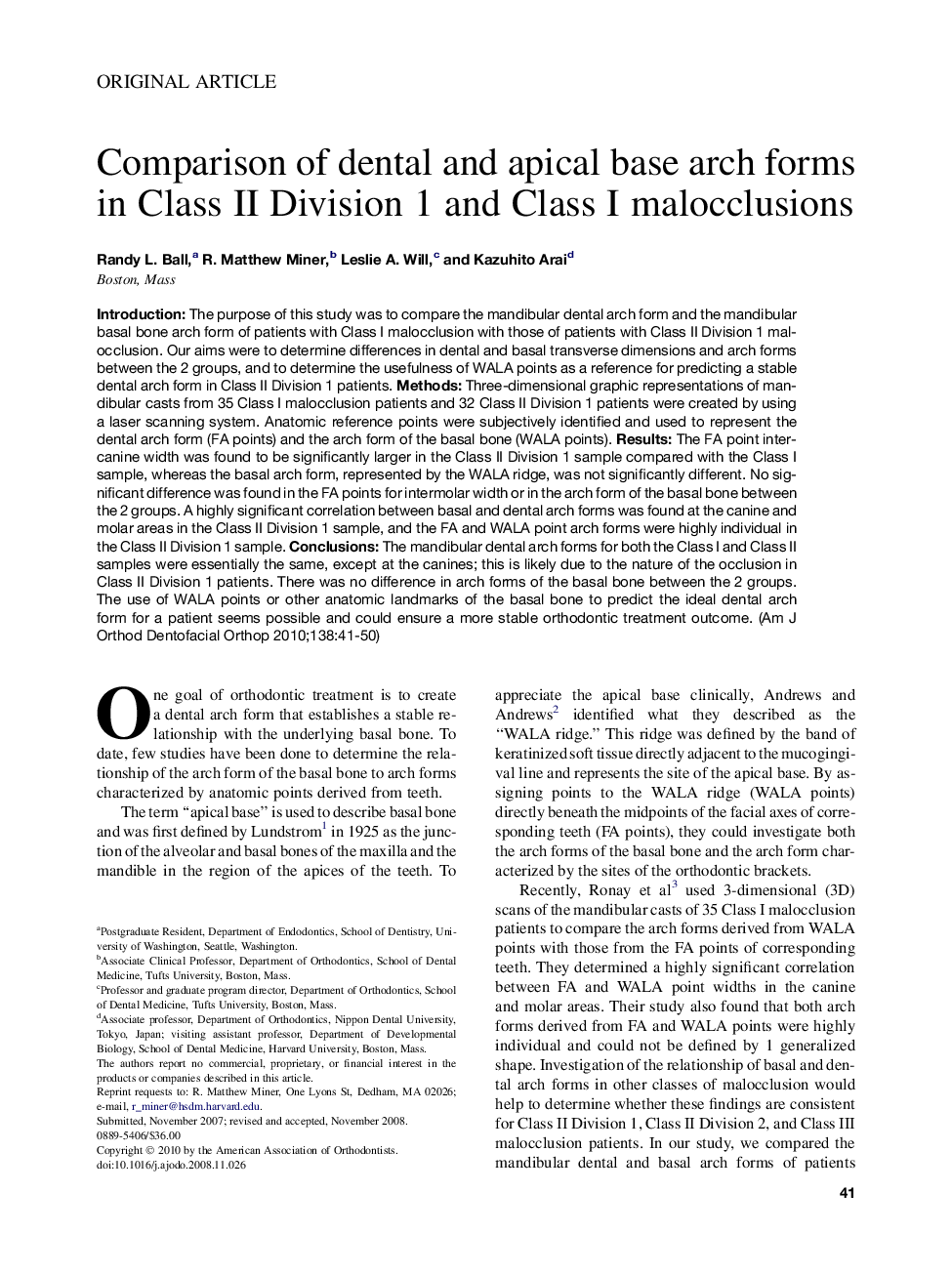| کد مقاله | کد نشریه | سال انتشار | مقاله انگلیسی | نسخه تمام متن |
|---|---|---|---|---|
| 3117460 | 1582752 | 2010 | 10 صفحه PDF | دانلود رایگان |

IntroductionThe purpose of this study was to compare the mandibular dental arch form and the mandibular basal bone arch form of patients with Class I malocclusion with those of patients with Class II Division 1 malocclusion. Our aims were to determine differences in dental and basal transverse dimensions and arch forms between the 2 groups, and to determine the usefulness of WALA points as a reference for predicting a stable dental arch form in Class II Division 1 patients.MethodsThree-dimensional graphic representations of mandibular casts from 35 Class I malocclusion patients and 32 Class II Division 1 patients were created by using a laser scanning system. Anatomic reference points were subjectively identified and used to represent the dental arch form (FA points) and the arch form of the basal bone (WALA points).ResultsThe FA point intercanine width was found to be significantly larger in the Class II Division 1 sample compared with the Class I sample, whereas the basal arch form, represented by the WALA ridge, was not significantly different. No significant difference was found in the FA points for intermolar width or in the arch form of the basal bone between the 2 groups. A highly significant correlation between basal and dental arch forms was found at the canine and molar areas in the Class II Division 1 sample, and the FA and WALA point arch forms were highly individual in the Class II Division 1 sample.ConclusionsThe mandibular dental arch forms for both the Class I and Class II samples were essentially the same, except at the canines; this is likely due to the nature of the occlusion in Class II Division 1 patients. There was no difference in arch forms of the basal bone between the 2 groups. The use of WALA points or other anatomic landmarks of the basal bone to predict the ideal dental arch form for a patient seems possible and could ensure a more stable orthodontic treatment outcome.
Journal: American Journal of Orthodontics and Dentofacial Orthopedics - Volume 138, Issue 1, July 2010, Pages 41–50